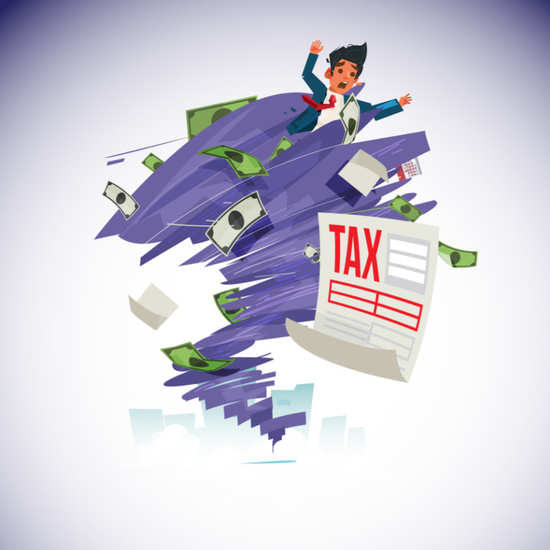
Every year, millions of taxpayers in the U.S. dutifully submit their tax returns, along with whatever taxes they owe to the government. But there is also a large percentage of people who find themselves short and can’t pay their taxes. Many struggle to meet their daily financial needs, let alone come up with the money to give to Uncle Sam. But not paying taxes has serious repercussions, including severe penalties, wage garnishment or even imprisonment. If you find yourself in this situation, this is the time to talk to your CPA about your options.
Adjust Your Withholding
Ideally, you shouldn’t owe anything to the IRS on April 15th, and they shouldn’t owe you anything. For many people all over the U.S., this doesn’t pan out, for any number of reasons. Either people are having too much taken out of each paycheck and they get a refund, or they have too little withdrawn from each paycheck and they end up with a tax bill.
Go to your company’s HR department and ask to confirm your withholding numbers. If you consistently owe taxes at the end of the year, bump up your withholding amount. If you need advice about how much to increase it, consult with your CPA, who can make calculations based on previous tax returns to come up with a reasonable withholding amount.
Request a Payment Plan
Did you know that the IRS is not completely oblivious to the fact that many people can’t pay their taxes? In order to help out, the IRS offers a payment plan. This enables you to pay off whatever you owe, a little bit at a time. This is all done online, so you don’t even have to visit a government office to apply. If accepted, you’ll be able to choose from a short-term payment plan of 120 days or less, and a long-term payment plan if the repayment period is longer than that.
Not everyone will qualify, since there is an application and approval process. A pro tip is, give yourself more time than you think you’ll need to pay off the tax bill. It’s better to meet the terms of your agreement over a longer term than to default on your payments. Defaulting will almost certainly disqualify you from being accepted for a payment plan in the future.
Request an Installment Agreement
If for some reason you don’t qualify for an online payment plan, you can apply for an installment agreement. This is for very long-term repayments that may meet or surpass 10 years. Hopefully your tax debt isn’t so high that you need 10 years to pay it off. An installment agreement, or IA, is mostly for high income individuals who haven’t paid taxes for many, many years.
File For an Extension
The worst thing you can do if you can’t pay your taxes is ignore it by not filing at all. The IRS will quickly get wind of your missing tax return and the penalties can be severe. Get together with your CPA and file a tax extension. This will give you six more months to legally file your return. The important thing to know about tax extensions is, it doesn’t give you a “pass” on your tax bill. You still owe your tax bill on the 15th, no matter if you file the tax form or not. But if you can’t pay on the 15th and you file an extension, the IRS knows that you’re being responsible and trying to take care of it. Just know that when the 6-month deadline comes around and you pay your tax bill along with your tax return, you will likely receive a bill from the IRS for interest on the amount during that 6-month time period.
Make Changes For the Future
With proper planning, you should be able to fairly easily manage your tax bill in the future. It will take some discipline and sacrifice, but at the end of the day you’ll rest easier when you know that you don’t owe anything to Uncle Sam. Here are some simple changes you can make that will protect your future ability to pay taxes:
Open a Second Savings Account
Many people don’t realize that you can have multiple savings accounts at their bank, but this is a good strategy. Open up a savings account that’s separate from your household savings account. This is going to be your tax savings account. You don’t want to mingle it with your regular emergency savings account, because this is money you won’t touch under any circumstances.
Automatic Deposits
Next, set up automatic deposits from your checking account. For whatever tax bracket you’re in, set aside that percentage to be deposited into your tax savings account. Most banks offer this automatic transfer service. So, if you’re in the 15% tax bracket and you get paid twice a month, have an estimated 7.5% from each paycheck deposited into your bank, automatically transferred into your tax savings account.
Come tax time, you’ll have the money you need to pay your tax bill in full. And, if you end up having more than Uncle Sam requires on April 15th, you can pat yourself on the back, because that extra money is now yours to be transferred into your personal savings account for your own use.
You may have even more options than the ones listed here, if you can’t pay your taxes. Your CPA is the best source for what to do in this situation. They can be your financial confidant and even your representative when it comes to dealing with the IRS. Get in touch today to learn more.
by Kate Supino
